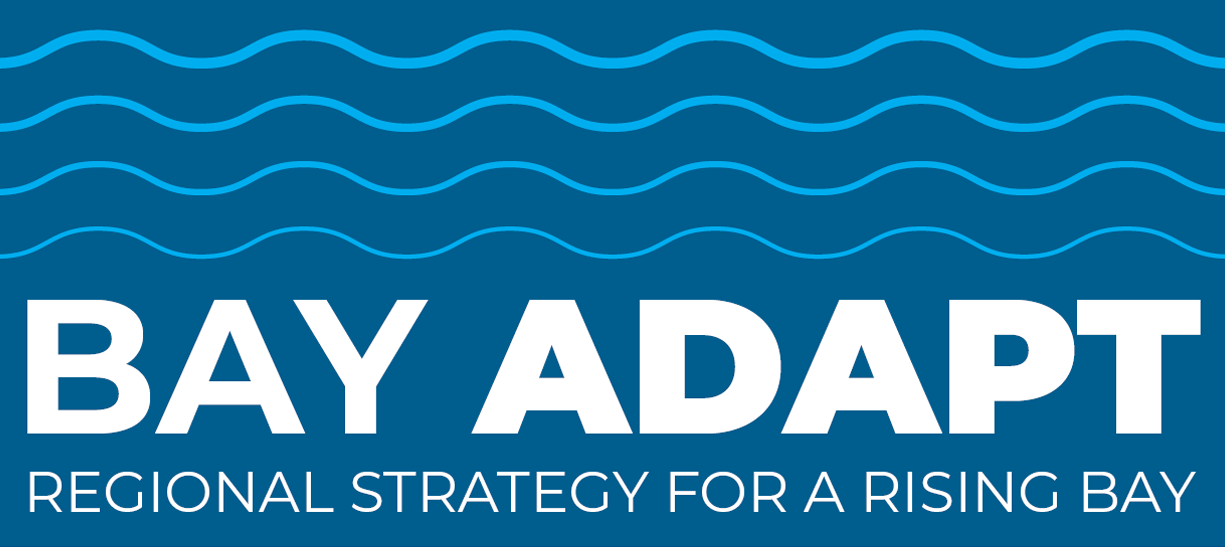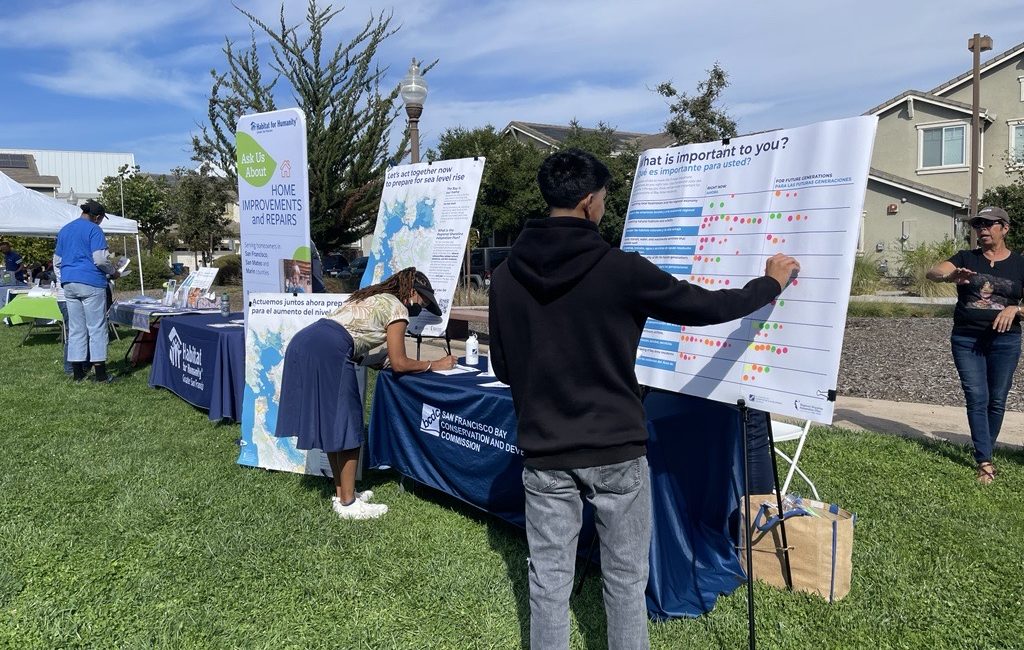Add page content here.
Why is Equity Important for Sea Level Rise Adaptation?
- By: Justin Ebrahemi
- | April 8, 2024
In the Bay Area, social equity and sea level rise are inextricably tied. Marginalized communities such as San Rafael’s Canal neighborhood, East Palo Alto, and the flatlands of Oakland sit right on the Bay’s shoreline. Not only do these communities face rapidly rising seas, they also suffer from decades of toxic waste exposure and other environmental injustices on their land. As a result, they are even more vulnerable to climate change risks like rising seas. In an effort to address these deep inequities, the Bay Conservation & Development Commission (BCDC) is now closely collaborating with these communities to create the Bay Area’s Regional Shoreline Adaptation Plan (RSAP).
Last summer BCDC launched the RSAP to help all Bay Area communities coordinate their sea level rise adaptation as a region. From the beginning, BCDC invited key stakeholders to the table, including those from marginalized communities, to help develop the plan. “We focused on members from disadvantaged communities and asked them to be part of the process,” explains Phoenix Armenta, Senior Manager for Climate Equity and Community Engagement at BCDC.
Government agencies and decision-makers have often tokenized these community members by engaging them in land use decisions towards the end of a process, without meaningful participation. With the RSAP, though, environmental justice representatives were brought in early on, compensated for their time, and engaged in deeply meaningful ways. Today, these environmental justice representatives make up the RSAP equity team and they are a central part of the plan’s development.
One of their main roles is co-creating the RSAP Equity Strategy with BCDC staff. The RSAP Equity Strategy is a living document that builds equity into the development, implementation, and evaluation of the Bay Area’s regional and local shoreline adaptation plans. As part of the process, the equity team recently considered how the RSAP will ask local practitioners to include equity in their adaptation planning. Bay Area planners who work on critical infrastructure, for instance, will need to consider issues like access to infrastructure, long-term maintenance, and funding in marginalized communities as part of sea level rise planning. In the past, these questions were often an afterthought and the impacts of such planning disproportionately harmed poor communities of color.
The RSAP Equity Strategy will ultimately help shape the guidelines that Bay Area communities use as they create and update their sea level rise adaptation plans. This will guide the Bay Area to focus on creating economic, recreation, and ecological benefits for shoreline communities who need them most. The RSAP is, in part, a collaborative planning tool to “understand where we went wrong in the past and create a livable future for those impacted by poor land use decisions,” explains Anthony Khalil, Food Sovereignty Director at Bayview Hunters Point Community Advocates, who is part of the RSAP equity team. The RSAP “takes the climate crisis and flips it into a climate justice opportunity,” he says.
The equity team has also created ways to ensure equity is part of the RSAP’s development internally. They’ve set up regular “equity check-ins” as moments to pause and reflect on their work: how the process is—or isn’t—supporting equity, and how to remove barriers and biases that impede climate justice. “These folks are infusing equity into every part of the process,” says Armenta. “We’re asking questions like: What are the working agreements? Who creates the agenda, and who’s speaking at our meetings? How can we hold ourselves accountable?”
These are just some of the equity considerations guiding the RSAP’s development. In this way, the RSAP Equity Strategy is embedding equity in the Bay Area’s climate adaptation and providing an example for local communities to follow. “The RSAP process is both creating and modeling what equity could look like for local plans,” says Armenta.
For environmental justice leaders like Armenta and Khahill, it’s imperative that this work supports equity long-term as the Bay Area adapts to rising seas. “For us in the frontline communities, climate change is already a part of our lives,” says Khahill. “This work can’t be constricted to the next two to three grant windows—this is generational planning.”
Other Recent Posts

Justin Ebrahemi
Justin Ebrahemi is the Director of Marketing & Communications at Greenbelt Alliance, where his experience in nonprofit leadership, environmental policy research, and journalism helps diversify the field of environmental advocacy.

